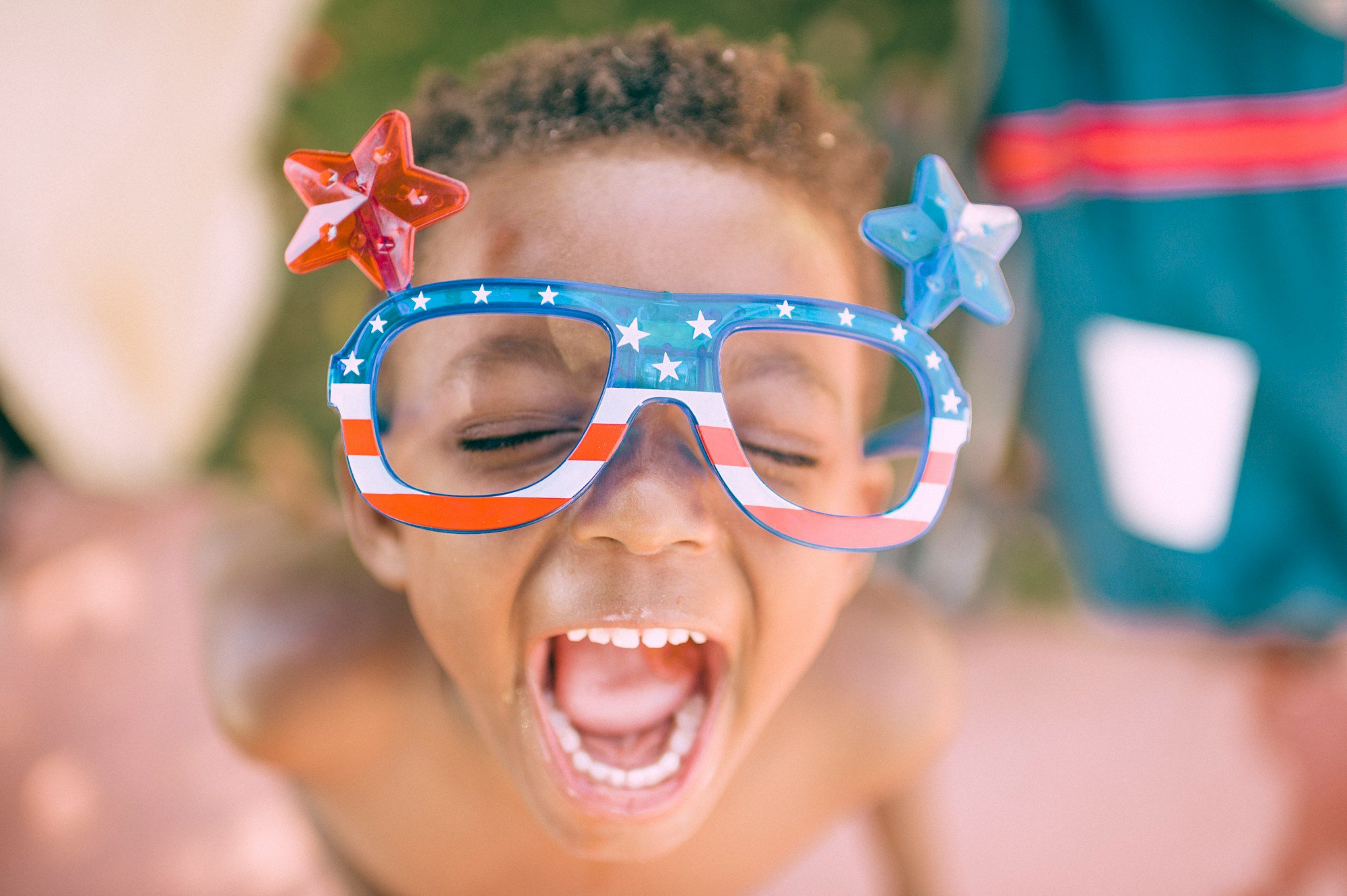
02 Jul A Parent’s Guide: Celebrating an Autism-Friendly 4th of July
The 4th of July is a time for celebration and togetherness. But, for families with a child on the Autism Spectrum, any holiday, especially one known for fireworks and family gatherings, can present unique challenges. To help support your family in navigating all things 4th of July, we’ve compiled five of our favorite tips for bringing some sensory-friendly fun to your Independence Day.

1. Understand Your Child’s Sensory Sensitivities
Noisy parades, fireworks and social gatherings can be overwhelming for children with ASD. Why? Because, in most children, Autism affects how the brain processes sensory input (sounds, smells, etc.). If your child becomes overstimulated quickly, consider attending smaller events, opting for at-home activities or hosting your own gathering. This gives you more control over the environment and gives your child the opportunity to take a “time-out” if needed.
If you do plan on attending busy public events, be prepared by bringing sensory-support items like noise-canceling headphones and preferred communication tools (visual aids or AAC devices). Having these items available can help reduce stress, discomfort and frustration caused by sensory overload.
2. Create Safe Spaces
Whether you’re hosting 4th of July celebrations, visiting friends, or attending community events, we encourage setting up a designated area where your child can retreat if they start to feel overwhelmed. This “safe zone” can include any preferred toys, comfort items, or sensory support tools that make your child feel safe and secure. By creating this space you’re building a place for your child to self-regulate and decompress from overstimulation!
3. Prepare in Advance
Challenges with unfamiliar situations are common in children with Autism. Introducing the concept of a 4th of July celebration in advance can help your child feel prepared to navigate the day’s festivities.
One great way to do this is with Social Stories! Social Stories are a visual aid developed by Carol Gray to help children on the Spectrum understand unfamiliar social situations. Other great strategies include role-playing new social scenarios and taste testing unfamiliar foods. The clearer the picture you paint, the more manageable the holiday will be!
Sample Social Stories for Your Family
- https://www.positivelyautism.com/downloads/socialstory4thofJuly.pdf
- https://www.marshall.edu/atc/files/The-4th-of-July-Social-Story.pdf
4. Understand Risks and Take Extra Precautions
Independence day goes hand-in-hand with lake trips, fireworks, and crowded events. And, while these activities are generally fun and harmless, families with a child on the Spectrum should take extra precautions.
If you’re heading to a crowded event like evening fireworks or a parade, we encourage you to equip your child with a GPS tracker, like AngelSense, which was specifically designed for children with Autism. Even if your child has no history of wandering, added stressors like noise, crowds, and lights can trigger a flight response.
For families who prefer to spend their holiday at the beach or pool, it’s important to be aware that water poses an increased risk to children with ASD. Children on the Spectrum are about 160 times more like to drown than their neurotypical peers. Before you hit the water, take a moment to review these safety & drowning prevention strategies from the Autism Society of Florida.
5. Foster Open Communication
Take time to communicate with family and friends about your child’s needs during the holiday. By sharing information and strategies that work well, you ensure everyone feels prepared and confident. Regular check-ins can also be beneficial, allowing everyone to adjust plans as needed throughout the day!



No Comments